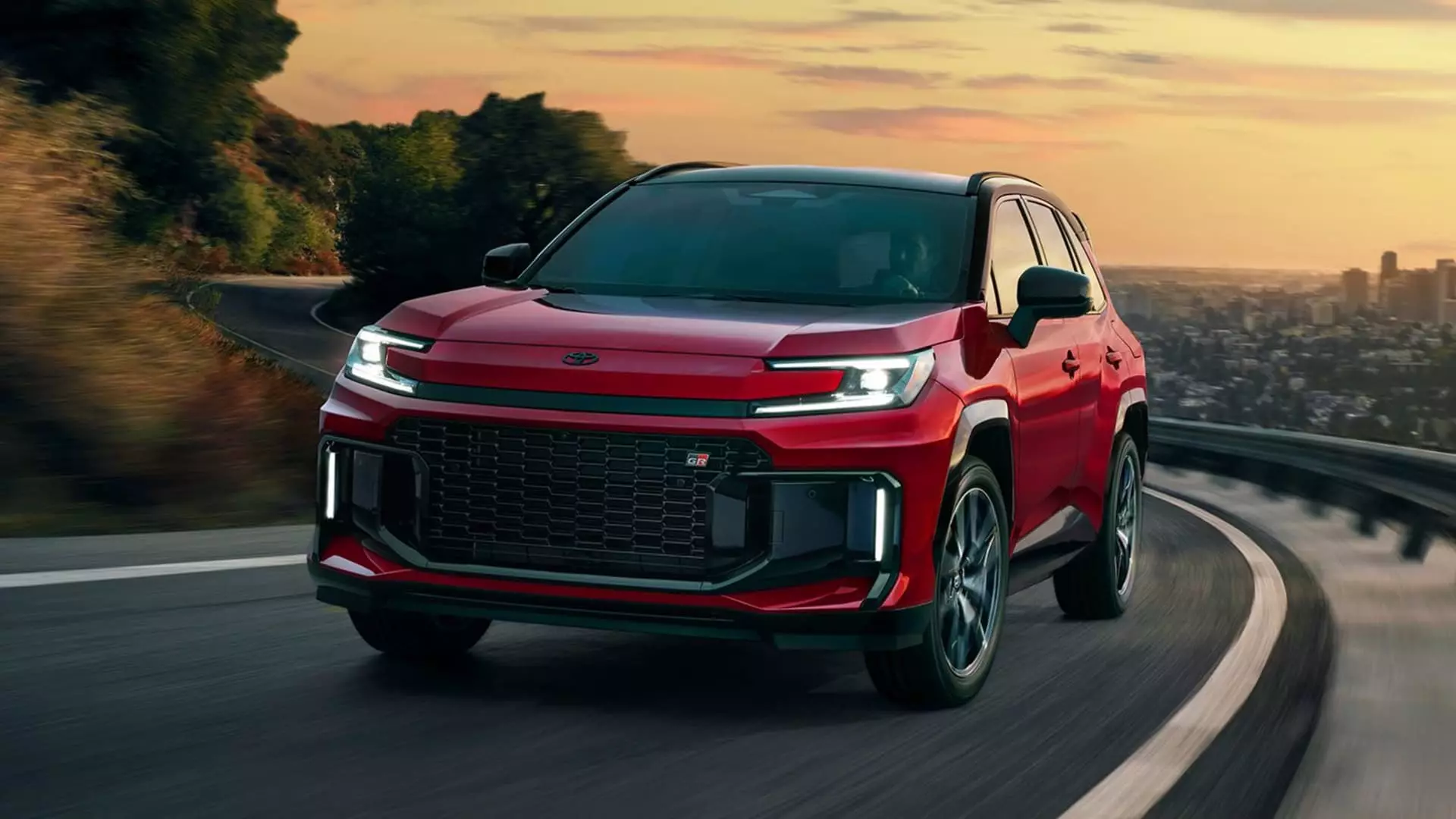In a significant and potentially transformative shift, Toyota has announced that its best-selling RAV4 will exclusively adopt hybrid technology in its 2026 release. While this may initially raise eyebrows, especially in a market still acclimatizing to electrification, this decision is a calculated move grounded in consumer preference and environmental responsibility. Toyota’s bold embrace of hybrid models showcases its commitment to evolving in a landscape where traditional gas engines are becoming increasingly outdated.
The automotive landscape has seen a gradual yet profound shift toward electrification, but surprisingly, the uptake of fully electric vehicles has been lackluster. With this in mind, hybrid models serve as an effective bridge between traditional fuel and fully electric options. For consumers still apprehensive about going fully electric, hybrids offer a taste of electric benefits—without losing the familiar feel of combustion engines. Toyota’s move to exclusively offer the RAV4 as a hybrid signals its understanding of market trends, where the hybrid is shaping up to be a preferred option rather than an occasional alternative.
Focusing on Consumer Demand: The Decision Explained
David Christ, head of the Toyota brand in North America, highlights that customer preferences have decisively pointed toward hybrids, as reflected in substantial sales growth. Last year, RAV4 hybrids constituted an impressive 44% of overall RAV4 sales. Furthermore, plug-in hybrids have also seen gains, indicating a robust appetite for electrified options among consumers. It seems inevitable that automakers must adapt to consumer demand, which can serve as a motivational force for innovation. The consumer, it appears, is voting with their dollars—and hybrids have won by a landslide.
This decision also aligns with Toyota’s historical strengths; dating back to the introduction of the Prius, the company has been a pioneer in hybrid technology. Rather than succumb to pressure from an industry fixated on full electric vehicles, Toyota is reinforcing its hybrid expertise. By anchoring the RAV4 in this familiar territory, the automaker continues to capitalize on its legacy while charting a new course that keeps the brand relevant and responsive.
The Climate Factor: Bridging Performance and Responsibility
Fuel efficiency and environmental responsibility are non-negotiable aspects of modern automotive design. With increasingly stringent fuel economy regulations in place, hybrids present a way for car manufacturers to not only meet these standards but exceed them. By adopting hybrid technology across its RAV4 lineup, Toyota positions itself as a responsible corporate citizen. This contrasts sharply with a segment of the industry focused solely on electric vehicles, which often discount the transitional role hybrids can play in reducing carbon footprints.
Still, critics might argue that hybrids are simply a temporary band-aid on the gaping wound that is fossil fuel dependency. However, one must acknowledge that transitioning to electric vehicles is not a one-size-fits-all solution, especially in regions where electric infrastructure remains underdeveloped. Hybrid vehicles serve a vital purpose in customer autonomy while promoting advancements in greener technologies.
Market Positioning: RAV4 vs. Competition
As the automotive market matures, the competition is fierce. Following the announcement, scrutiny on whether the RAV4 can maintain its position as a top contender intensifies. With sales figures that reveal a 9.3% increase year-over-year, the RAV4’s hybrid strategy could fortify its dominance in an increasingly saturated marketplace.
Toyota’s long-standing reputation and customer loyalty provide fertile ground to introduce this all-hybrid line-up. Coupled with the trending move toward increased sustainability, it’s reasonable to predict that the RAV4 will resonate well with consumers. While American consumers have shown a historical preference for full-size trucks, such as the Ford F-150 and Chevrolet Silverado, the RAV4 seems poised to reaffirm that compact SUVs can dominate. It’s a testament to good strategy in a rapidly evolving market.
The Tariff Challenge: Navigating Uncertainty
Political and economic challenges always loom in the background, and President Trump’s tariffs on auto imports add a layer of complexity. If faced with a production crisis, manufacturers may need to contemplate relocating more production stateside to mitigate costs. While Toyota has plans to increase RAV4 production in Kentucky, it remains to be seen how they will adapt to the unpredictable landscape shaped by ongoing political negotiations and tariff fluctuations.
In an environment of uncertainty, a strategy rooted in a universally appealing product like the RAV4 hybrid could provide a buffering effect against economic unpredictabilities. Instead of fighting against the current, Toyota is aiming to steer the conversation toward hybrids, which may well resonate with budget-conscious consumers looking to manage fuel costs without sacrificing their love for efficiency and performance.
Indeed, the success of the all-hybrid RAV4 will not completely mitigate the challenges presented by tariffs, but it positions Toyota favorably in undertaking the looming uncertainties of the market. The company has shown its willingness to adapt and innovate, traits that are not just admirable but essential for survival in today’s automotive industry.

